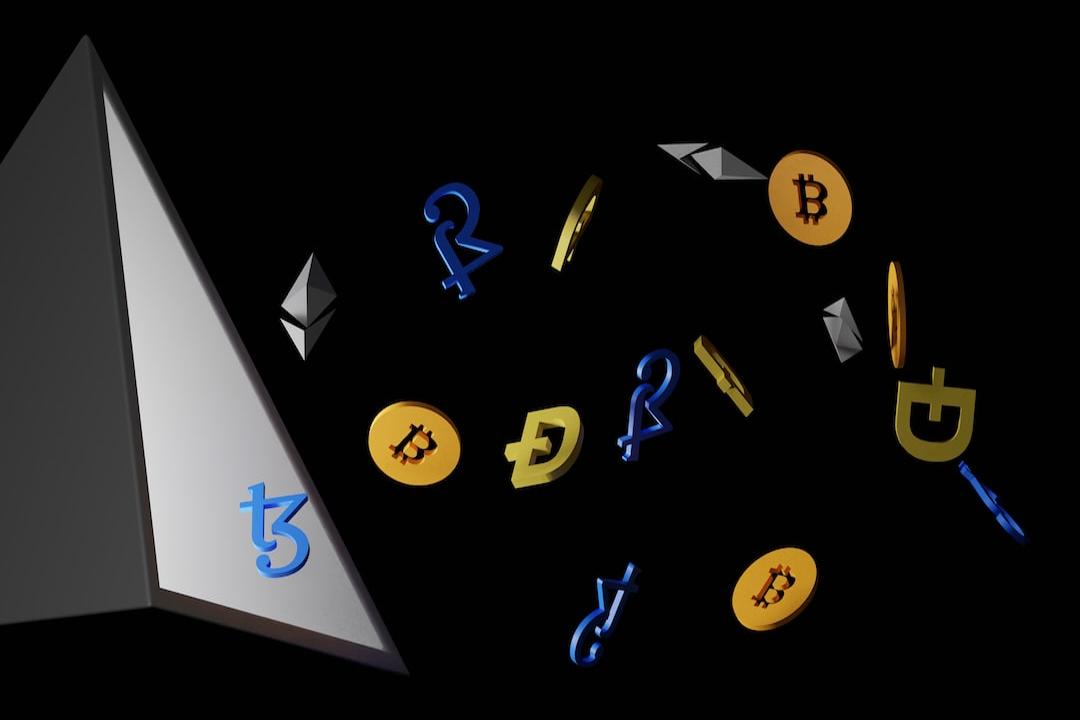The market is boring, isn’t it?
But recently, I have started to enjoy this feeling of boredom. In this era of information explosion and intense competition for attention, boredom has become a rare respite.

Looking back at the last bull market cycle, I spent almost all day online, afraid of missing any new high-yield investment opportunities. Although that kind of excitement was attractive, the prolonged high tension made me exhausted. I even started to look forward to the arrival of a bear market, so that I could catch my breath.
In fact, feeling bored is also a good thing. It means that everything is relatively stable, and there are no major problems to solve, which is beneficial for mental health.
The same applies to the cryptocurrency market. In the past two months, due to the relatively stable cryptocurrency prices, the market has appeared somewhat dull. But compared to the turbulence of a bear market, this calm bull market is actually more reassuring. The price of Bitcoin has remained stable near its historical high point in 2021, there are no signs of bankruptcies among cryptocurrency companies, USDC remains stable, and industry leaders are all doing well.
So, where are we now? And what lies ahead in the next few months?
How strong will the market’s upward momentum be?
According to Coinbase’s Q1 2024 report, retail trading has not fully recovered.
In Q1 2024, retail trading volume was $56 billion, compared to the whopping $177 billion in Q4 2021.

On the other hand, institutional trading volume is closer to the ATH of $371 billion set in Q4 2021, with a trading volume of $256 billion in the most recent quarter.

You might say that retail investors are now more engaged in on-chain trading. But even with the recent craze for meme coins, the trading volume on decentralized exchanges (DEX) (including Solana) has not reached the historical highs of 2021/2022.

Despite angry accusations against venture capitalists for abandoning retail investors, the amount of funding has yet to reach the peak of 2022. (Project teams may announce fundraising news before the funds are fully received for marketing purposes, resulting in a significant time lag between the reported fundraising data and the actual flow of funds.)

In addition, meme top coins, which symbolize market FOMO sentiment, have not yet emerged, Coinbase’s app is not dominating the Apple App Store, discussions about cryptocurrencies in your social circle are not as lively, cryptocurrency advertisements are not overwhelming, and even on social media platform X, it is difficult to see posts flaunting Lamborghinis or Rolexes to show off wealth.
So, is this a signal of a bull market? I think so.
Bitcoin seems to have been driven to its current price by us (the old hodlers, haha), ETF speculators, and ETF buyers. But retail investors haven’t realized this.
The record-high supply of stablecoins is another bullish signal – there is off-exchange capital ready to enter at any time.

Finally, we currently have positive funding rates, indicating that traders are bullish and betting on the market going up. We have also successfully shaken off the additional leverage in February 2024.

My intuition tells me that the market will continue to rise, and it is currently looking for a breakthrough point to break out of this consolidation phase.
Typically, a crypto bull market is triggered under the following conditions: 1. We develop new technological innovations; 2. These innovations bring new market narratives; 3. We find new token issuance methods.
Even without new capital inflows, the market may become active due to leverage trading and FOMO psychology among existing cryptocurrency investors. In fact, the market cycle of 2017-2018 started with Ethereum and initial coin offerings (ICO).
The market cycle of 2020-2021 was triggered by the excessive issuance of currencies during the COVID-19 pandemic, but it heated up due to the frenzy of decentralized finance (DeFi) and non-fungible tokens (NFTs) and became “internally driven.”
This time, we have gone from a $1 trillion cryptocurrency market cap in early 2023 to the current $2.4 trillion market cap, thanks to Bitcoin exchange-traded funds (BTC ETFs), staking/yield farming, and the issuance of tokens at crazy high valuations.
Therefore, for the market to continue to thrive, it needs external or internal catalysts. Some external catalysts include:
Interest rate cuts
Speculation on Trump’s victory (which ended with sell-off news after he was elected)
Sudden increase in capital inflow from another major institutional player adopting cryptocurrencies or Bitcoin exchange-traded funds (BTC ETFs)
Historical pricing of Bitcoin halvings
Approval of Ethereum exchange-traded funds (ETH ETFs)
Unexpected events (most likely)
Ideally, I hope to see innovations from 0 to 1, such as decentralized finance (DeFi) and non-fungible tokens (NFTs) in 2020, become internal catalysts. But so far, this seems unlikely to happen.
Many of the 0-to-1 innovations in this cycle, such as Bitcoin DeFi, re-staking, L2, and DePin, lack the appeal to attract retail investors. Although meme coin trading may initially attract some new users, their interest (and money in their pockets) may not last as retail investors lose money on meme coins.
A strong driving force will be consumer applications outside the cryptocurrency field that can attract users, such as Friend Tech, Fantasy Top, certain GameFi games, etc., which have the potential to become potential catalysts. They help expand the user base to a wider audience, not just loyal cryptocurrency users.
However, the key factors currently driving user activity and market liquidity in this cycle – airdropped tokens – are gradually losing their influence. In short, the incentive effect brought by airdropped tokens has begun to weaken.
The future development of staking, airdrops, and token issuance
In each market cycle, we can find new ways of token issuance, and these methods become increasingly simplified with each cycle.
If you have been following my views, some of the content may sound familiar, but please bear with me as I explain in detail:
Before Ethereum emerged, token issuance mainly relied on proof-of-work (PoW) blockchains. The pattern at that time was relatively fair. On the one hand, Bitcoin holders could receive airdropped tokens through forks; on the other hand, the barrier to mining was not high.
However, Ethereum’s ERC20 token standard completely changed this pattern. Since then, anyone can easily issue tokens at a low cost. But the problem lies in how to stimulate people’s interest in buying these tokens. To address this challenge, initial coin offerings (ICOs) emerged, accompanied by whitepapers depicting world-changing blueprints to attract investors.
But over time, many teams behind ICOs failed to deliver on their overly hyped promises, and as investors saw through the falsehoods, the ICO frenzy gradually faded away.
(I know many “industry builders” from the 2017/18 cycle who raised funds and chose to enjoy a leisurely life in Dubai, Portugal, and other places, while doing the bare minimum work to deal with external scrutiny.)
Then, in 2020/21, we ushered in a new era of fair launches and liquidity mining. Although both methods have their advantages, their heyday has ended. The reason is that the impact of liquidity mining on token prices has proven to be unsustainable, as it has triggered a large amount of mining and selling activities.

Fair launches sound very appealing in theory, but in practice, there are very few cases that truly achieve fairness (the reasons behind this are complex, but the fact is that insiders often manage to obtain the majority of the tokens through various means).
The concept promoted to ordinary investors is “governance” and participation in project revenue sharing, which sounds tempting. But in reality, how many people truly understand and benefit from the so-called #Realyield?
分元(Points meta) is a natural evolution of token issuance. It aims to address the problem of “mine and dump” by prolonging the Token Generation Event (TGE), increasing multiple airdrop mining seasons, and encouraging users to truly use dApps, thereby keeping users and Total Value Locked (TVL) for a longer period of time.
This approach has worked in the past, with successful airdrop campaigns such as Jupiter, Jito, and what I believe to be EtherFi.
However, like every new token issuance paradigm, once the game rules become apparent and speculators in the crypto community start “exploiting” or “finding loopholes” in the system, it eventually loses its incentive.
My recent heavy loss was buying Tensorian NFT, it’s just my bad luck. I was expecting decent returns through airdrops, but the rewards I received were far less than the cost of buying this NFT, and I feel like I’ve been heavily scammed again.
Another major problem is the issuance of low float tokens (high fully diluted valuation, low market cap) and a lack of compelling narratives to attract retail investors to these low float tokens.
The biggest problem is people’s lack of trust in the technology. They don’t believe in the various narratives.
To be honest, I like airdrops with high fully diluted valuations (FDV) because the allocation in dollars is high. I can mine and sell these tokens – everyone knows the tricks here.
Venture capitalists also like this approach because even if the token price drops by 80% after the Token Generation Event, their initial investment still grows by 10 times.
However, due to limited influx of new retail investors and the fact that experienced crypto investors from previous cycles have learned not to hold low float tokens, the prices of these tokens are bound to fall.
Just for recently issued tokens, we need a capital inflow of $60 billion to maintain their current prices!
We used to be heavily involved in yield farming games, but the market sentiment seems to have changed due to two recent events:
First is the anti-whale airdrop campaign initiated by Layerzero. Layerzero had previously inflated user numbers through witching behavior to boost project valuation and obtain fees. Now, they have decided to take action against these whales.
Another notable event is Eigenlayer’s so-called “staking airdrop.” Despite announcing token issuance, Eigenlayer has been slow to take further action, which has attracted widespread attention and discussion in the market. During this process, we gradually realized that the rules of the airdrop were excessively complex, making it difficult to make effective predictions and plans for the activity. This game always seems to be manipulating every move of the players.
So, how will the future market trend be?
To find answers, we will closely monitor the effectiveness of the Layerzero airdrop campaign, as well as keep an eye on the developments of projects like zkSync Era, Zircuit, and Magic Eden.
We often only consider the perspective of airdrop recipients, but in reality, every project is eager to attract real users. These users will further understand the project through their participation and be willing to continue participating and buy its tokens after the Token Generation Event.
Before the Token Generation Event, whale wallets are valuable because they can inflate metric data. However, after the TGE, they lose their value because whales are unlikely to buy tokens afterward. Even if they do, one person managing hundreds of wallets still only has the purchasing power of one person, not a hundred.
To make airdrops attractive again, project teams can focus on the following aspects:
Identify genuine users and potential new users by targeting active users in other projects or the crypto space, including NFT holders as Synthetix does with Infinex.
Reward users who use competing projects to attract them to switch sides. For example, distribute initial airdrops with 50% of the tokens locked until users perform actions within the protocol (such as deposit TVL, make trades, etc.).
Proof of Humanity (POPs) holders, X accounts with a certain number of followers, individual PoS stakers, etc. This is a practice already taken by Starknet and Avail (though it has caused some damage to real users).
Increase the allocation of airdrops:
The current allocation of 5% to 15% is not enough to attract users. This ratio may work when there are fewer participants in the airdrop. Friend tech’s 100% airdrop without allocation to VCs or project teams is an interesting attempt, but for this trend to become popular, FRIEND’s performance must be outstanding.
Issue tokens with higher market cap/fully diluted valuation (MC/FDV) ratio and lower valuation:
Increasing the allocation of airdrops can partially mitigate the low float problem but not completely eliminate it.
Issue tokens with lower fully diluted valuation (FDV) to leave room for price appreciation for new buyers. The good price performance of Kamino’s KMNO could be a catalyst for this change.
My advice is still to use multiple independent wallets. The additional 100 EIGEN tokens airdrop activity by Eigenlayer is a good example. But please be careful not to overly diversify your assets because most airdrops and mining activities are measured based on two factors: 1. Total Value Locked (TVL) deposited and 2. Trading volume.
If you hold multiple NFTs, spread them out so that each wallet holds only one well-known NFT.
Final thoughts
In the market analysis in February of this year, I issued a warning that the potential risks of cyclical airdrop mining were quietly growing.
As it turns out, my concerns were not unwarranted. The decoupling event of ezETH proved this, resulting in a large number of circular positions being liquidated.
This is undoubtedly an expensive lesson, but it is also a necessary path for industry development. Since then, the use of leverage in decentralized finance (DeFi) has noticeably contracted.
Currently, various forms of leverage have retreated. As speculators begin to reduce risks and adjust their high expectations for airdrop points, lending rates for stablecoins are also showing a downward trend.
At the same time, the on-chain lending market remains stable, with no major liquidation events before the price of Ethereum dropped to $1,500.
However, leverage will always re-enter the market in some less noticeable way.
Currently, the two most obvious areas of leverage include:
Ethena stablecoins, which account for 4.7% of the BTC funding rate and a whopping 13.6% in the ETH funding rate.
Re-staking or liquidity re-staking.
With the gradual rollout of new features by Eigenlayer, as well as the launch of more AVS projects and the implementation of reduction mechanisms, these may bring new risk points to the market.
But the most concerning issue is still the issuance of low float tokens.
Personally, if a token’s market cap to fully diluted valuation (MC/FDV) ratio is below 80%, I usually avoid holding it long-term. Of course, there are exceptions, such as when a project like STRK offers an annualized yield (APY) as high as 20% and accumulates points on the Nostra lending market, such high-yield airdrop point activities are more attractive.
Twitter:
https://twitter.com/BitpushNewsCN
BitPush TG Community:
https://t.me/BitPushCommunity
BitPush TG Subscription:
https://t.me/bitpush
BitPush Btok Subscription:
https://btok360.com/bitpush
This article is from BitPush, please indicate the source when reprinting.
Original article link: https://www.bitpush.news/articles/6748703
Related news
No related articles.


